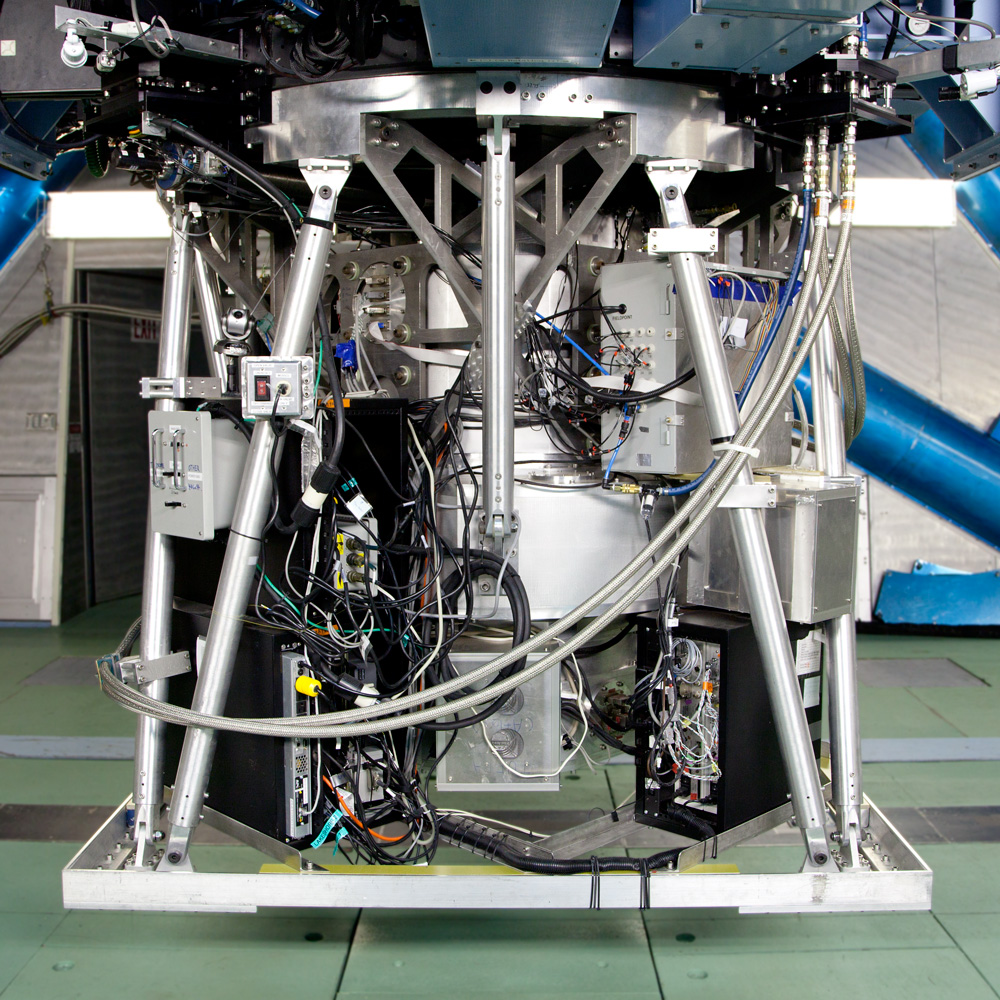MOIRCS
(Multi-Object Infrared Camera and Spectrograph)
(Multi-Object Infrared Camera and Spectrograph)

MOIRCS is a near-infrared camera and spectrograph that combines a wide field of view with the capacity to capture the spectra of about 40 objects simultaneously. Its most notable feature is its multi-object spectroscopy, which opens a large window to the Universe by allowing researchers to obtain infrared spectra for a large number of objects in a single observation.

Fast Facts
- Description:
- Infrared camera and spectrograph
- Wide field of view
- Three principal structures
- Main cryostat
- Multiple-object mask exchange system
- Support frame
- Operation:
- Camera
- Mirrors split incoming light and send different parts of image to two detectors.
- Tohoku University Focal Plane Array Controller (TUFPAC) produces images.
- Spectrograph
- Capable of obtaining multiple spectra of up to 40 astronomical objects at the same time, marking a dramatic increase in observational efficiency over single object spectroscopy
- Mask carousel
- Has up to 21 mask slots for multi-object spectroscopy.
- Can switch between two masks in 4 minutes.
- Separated from main instrument structure so that new masks can be put on without opening the entire instrument.
- Applications:
- Exploration of objects at the far reaches of the Universe
- Large numbers of distant galaxies
- Large structures, e.g., nearby nebulae
- Specifics:
- Size and weight:
- 2 m x 2 m x 2 m (7 ft. x 7 ft. x 7 ft.)
- 2.3 tons
- Placement: Cassegrain focus
- Detectors used: two, 4 megapixel Hawaii II detectors (2048 x 2048)
- Filters available for imaging and spectroscopy: Y, J, H, K bands
- Wavelengths: near-infrared between 0.9 and 2.5 microns
- Fully cryogenic
- FOV: 4 x 7 arcminutes
- Spectral resolution in three modes
- Low (R~400)
- Medium (R~1300)
- High (R~3000)
- Spatial Resolution: 0.117 arcsecond
- Development:
- Co-developed by Subaru Telescope (National Astronomical Observatory of Japan) and Tohoku University.
- Research and development began in 1999 with significant contributions by graduate students.
- Overcame several challenges, e.g., developing a drive mechanism for the mask that could withstand cryogenic conditions of at least minus 150 degrees.
- Tohoku University Focal Plane Array Controller (TUFPAC) software was developed at Tohoku University.
- Construction began in 2000.
- Handbuilt from individually procured high-performance parts
- Was the world's first multi-object near-infrared spectrograph available for common use on a large (8-10 m) telescope.
- "nuMOIRCS" Project scheduled for 2015
- Introduction of integral field spectroscopy (IFU) function to MOIRCS
- Change detectors to Hawaii II RG
- Replacement of all electronics related to the detectors
- Specialized Information about the Instrument and Observing: